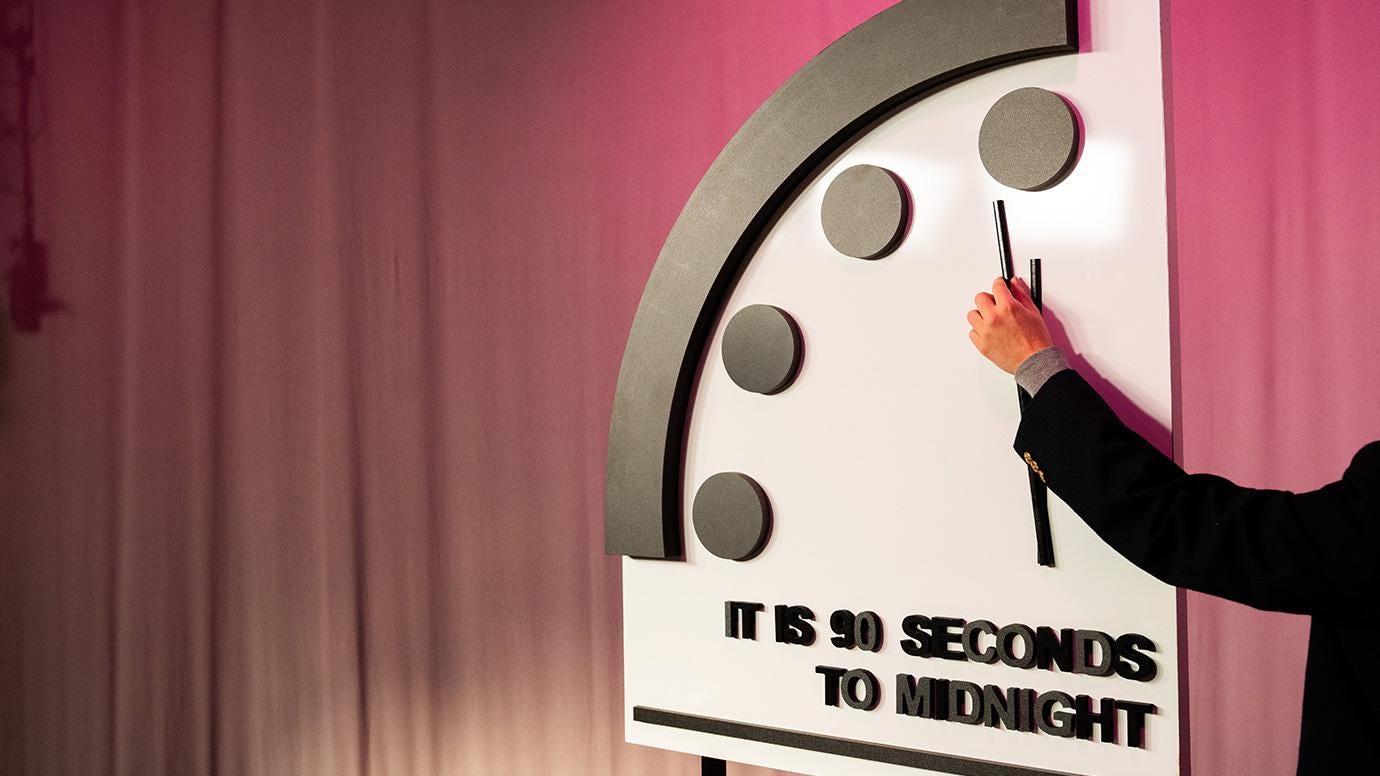EVERY YEAR, IN late January, a small group of beetle-browed scientists, politicians, and journalists gather at the National Press Club in Washington, DC, to ponder the end of the world. This is a day of solemn kitsch: the unveiling of the Doomsday Clock, the minimalist midcentury dataviz that, since 1947, has been adjusted to dramatize the imminence of global catastrophe.
But that’s too many syllables. Let’s use the shorthand: doom. And it’s close at hand. The Bulletin of Atomic Scientists, the nonprofit group that maintains the clock, used to set the hands based entirely on the probability of nuclear hellfire. Then in 2007 they added climate change to their calculus and, in 2017, cyberwar. The clock’s setting is largely impressionistic. To rough out a relative idea of how safe or imperiled the world is, a committee meets twice a year to weigh signs of peace and climate amelioration—treaties, accords, regulations—against the rumblings of war and environmental disaster.
Five years ago, before a hushed assembly, I watched Jerry Brown, the freewheeling former governor of California, and William Perry, the stern former defense secretary, drew back a heavy black curtain to reveal the iconic clock graphic, then set for 2019—at two minutes to midnight.
At the time, it was like seeing an MRI with the very worst news. Humankind had only been that near to the apocalypse twice before. The first was in 1953, shortly after the US and Soviet Union started testing hydrogen bombs, and the second was when President Donald Trump was wrapping up his first year of reckless climate denialism and fire-and-fury saber rattling. It was then his second year.
By 2023, it was down to 90 seconds to midnight. And that’s where the clock remains now, in 2024, as we go about our lives, spending and loving our friends and trying to get out of the heat.
The Bulletin’s president and CEO is Rachel Bronson, former director of Middle East studies at the Council on Foreign Relations, author of Thicker Than Oil: America’s Uneasy Partnership with Saudi Arabia, and onetime cochair of Chicago Shakespeare Theater’s Producers’ Guild.
The clock’s current setting in 2019, she said at the time, reflected the ongoing threats posed by escalating arms races and rising temperatures. Widespread information warfare was amplifying these dangers. The mood in the room was funereal.
And today we’re 30 seconds closer to doomsday.
Keep reading with a 7-day free trial
Subscribe to Magic + Loss to keep reading this post and get 7 days of free access to the full post archives.





